Habitat
This species tends to grow in shady disturbed places, such as on banks or on mineral soil of outcrop ledges (). Its distribution is considered to be confined to the western North America (extending east to western Alberta, Montana and Utah), as well as Mexico and northern South America ().
Gametophyte
Overall structure:
 Plants are often very small, occuring in relatively dense patches or sometimes as scattered individuals. The plants appear flattened with leaves arranged in two rows along the stems.
Plants are often very small, occuring in relatively dense patches or sometimes as scattered individuals. The plants appear flattened with leaves arranged in two rows along the stems.
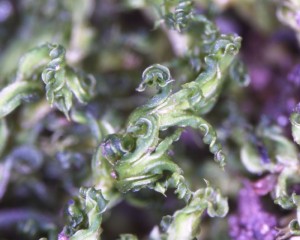 The leaves are often very contorted when dry.
The leaves are often very contorted when dry.
Leaves:
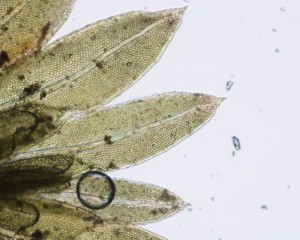 As with other members of the genus Fissidens, the leaves of this species possess a characteristic feature – a “pocket-like” structure in the lower part of the leaf.
As with other members of the genus Fissidens, the leaves of this species possess a characteristic feature – a “pocket-like” structure in the lower part of the leaf.
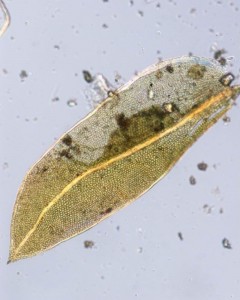 The pocket “opening” is on the portion of the leaf closest to the stem and is oriented towards the apex of the shoot. The laminae which form the sides of the pocket are termed vaginant laminae.
The pocket “opening” is on the portion of the leaf closest to the stem and is oriented towards the apex of the shoot. The laminae which form the sides of the pocket are termed vaginant laminae.
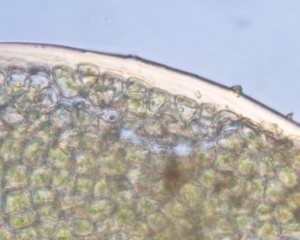 In Fissidens limbatus (and in some other species of Fissidens), the leaf margins have a distinct border composed of clear and elongate cells.
In Fissidens limbatus (and in some other species of Fissidens), the leaf margins have a distinct border composed of clear and elongate cells.
 To the left is a picture of a cross-section through the lower half a leaf showing the vaginant laminae that form the sides of a “pocket”
To the left is a picture of a cross-section through the lower half a leaf showing the vaginant laminae that form the sides of a “pocket”
Sporophyte
Overall structure:
The sporophytes are frequent in the spring.
Sporangium:
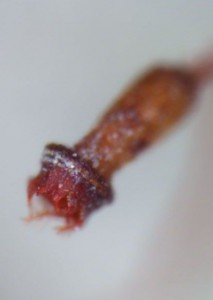 The sporangium of this species is light brown in color while the peristome teeth are bright red. As the sporophytes mature, they tend to become inclined.
The sporangium of this species is light brown in color while the peristome teeth are bright red. As the sporophytes mature, they tend to become inclined.
Comments:
Fissidens bryoides is a very similar species that occurs within the local range of F. limbatus and may be difficult to distinguish from that species without microscopic examination.

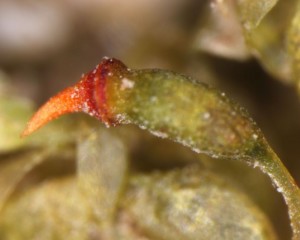
Hello!
This is the most extensive moss listing and identification I have encountered so far. I am very much happy to collaborate with you since am also mapping our local microflora in the Philippines.
Would like to know if we can work together with the ID? I have so much to ask. Where can I reach your or your team? Thank you.